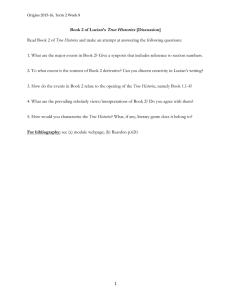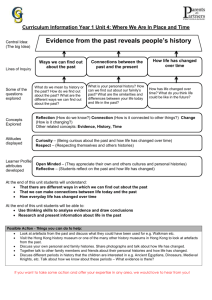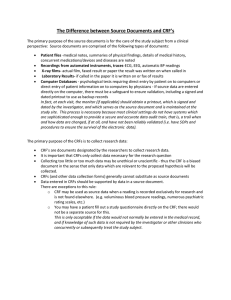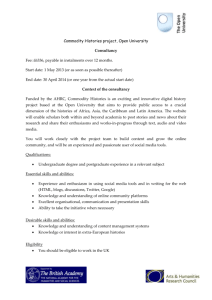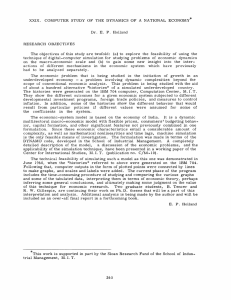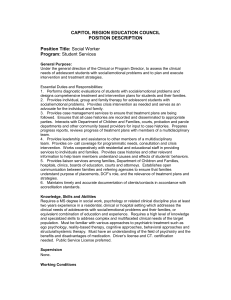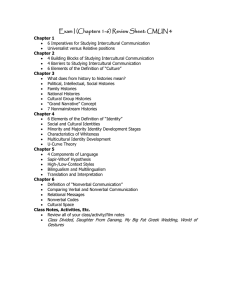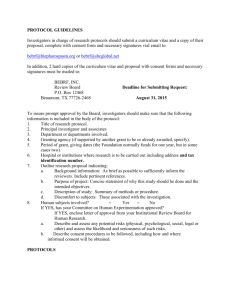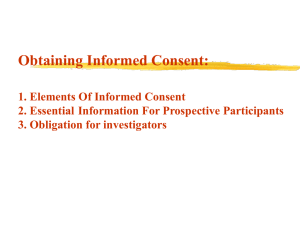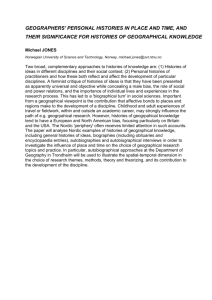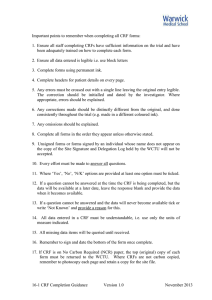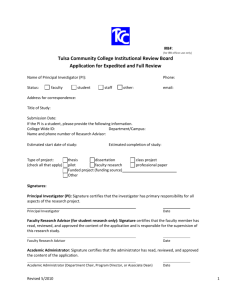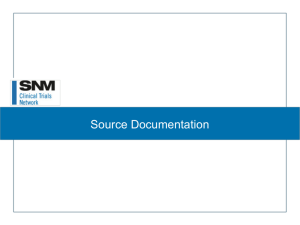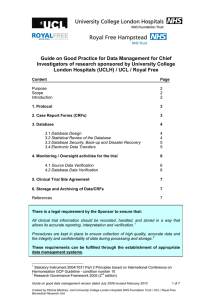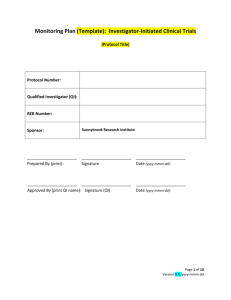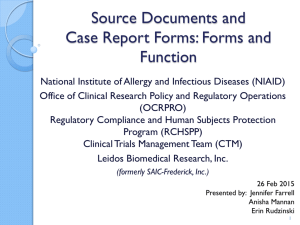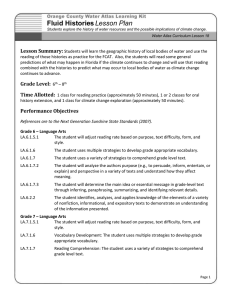Subject Case History Guidance
advertisement
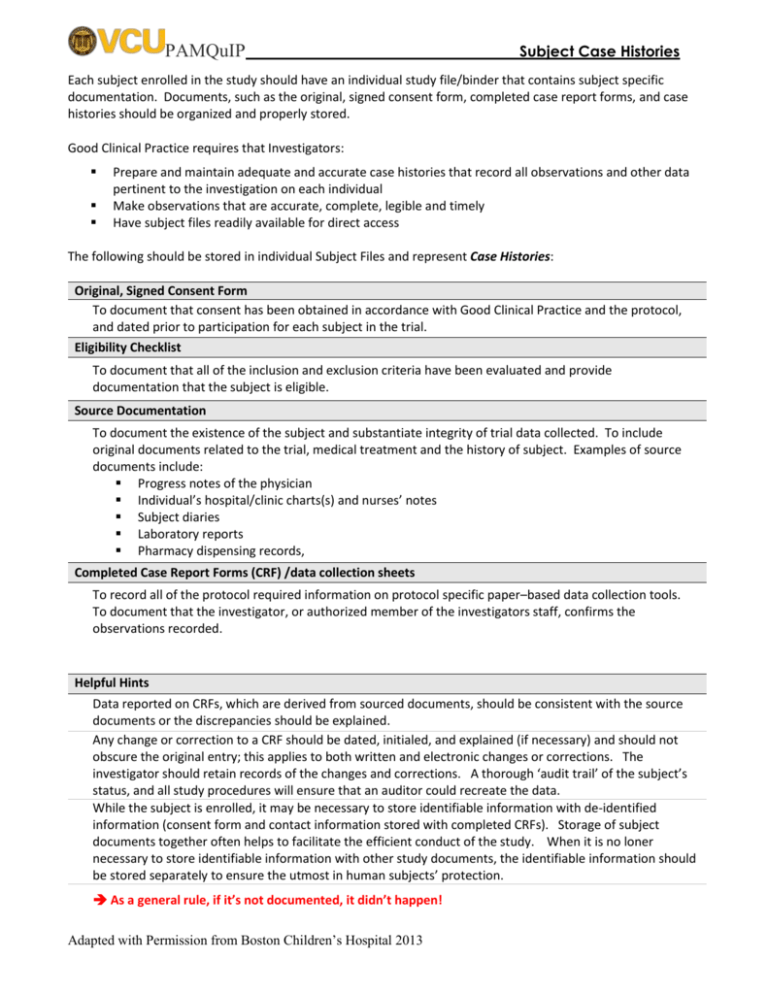
PAMQuIP Subject Case Histories Each subject enrolled in the study should have an individual study file/binder that contains subject specific documentation. Documents, such as the original, signed consent form, completed case report forms, and case histories should be organized and properly stored. Good Clinical Practice requires that Investigators: Prepare and maintain adequate and accurate case histories that record all observations and other data pertinent to the investigation on each individual Make observations that are accurate, complete, legible and timely Have subject files readily available for direct access The following should be stored in individual Subject Files and represent Case Histories: Original, Signed Consent Form To document that consent has been obtained in accordance with Good Clinical Practice and the protocol, and dated prior to participation for each subject in the trial. Eligibility Checklist To document that all of the inclusion and exclusion criteria have been evaluated and provide documentation that the subject is eligible. Source Documentation To document the existence of the subject and substantiate integrity of trial data collected. To include original documents related to the trial, medical treatment and the history of subject. Examples of source documents include: Progress notes of the physician Individual’s hospital/clinic charts(s) and nurses’ notes Subject diaries Laboratory reports Pharmacy dispensing records, Completed Case Report Forms (CRF) /data collection sheets To record all of the protocol required information on protocol specific paper–based data collection tools. To document that the investigator, or authorized member of the investigators staff, confirms the observations recorded. Helpful Hints Data reported on CRFs, which are derived from sourced documents, should be consistent with the source documents or the discrepancies should be explained. Any change or correction to a CRF should be dated, initialed, and explained (if necessary) and should not obscure the original entry; this applies to both written and electronic changes or corrections. The investigator should retain records of the changes and corrections. A thorough ‘audit trail’ of the subject’s status, and all study procedures will ensure that an auditor could recreate the data. While the subject is enrolled, it may be necessary to store identifiable information with de-identified information (consent form and contact information stored with completed CRFs). Storage of subject documents together often helps to facilitate the efficient conduct of the study. When it is no loner necessary to store identifiable information with other study documents, the identifiable information should be stored separately to ensure the utmost in human subjects’ protection. As a general rule, if it’s not documented, it didn’t happen! Adapted with Permission from Boston Children’s Hospital 2013 PAMQuIP Adapted with Permission from Boston Children’s Hospital 2013 Subject Case Histories
